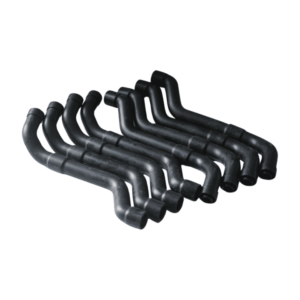rubber cooling hoses
Rubber Cooling Hoses: A Vital Component
Rubber cooling hoses are essential components in the cooling systems of vehicles and other machinery. They transport coolant, a fluid that absorbs heat from the engine and transfers it to the radiator for dissipation.
Key Features of Rubber Cooling Hoses:
- Flexibility: Rubber cooling hoses are flexible to accommodate engine movement and vibrations.
- Heat Resistance: They must be able to withstand high temperatures without degrading or bursting.
- Pressure Resistance: They should be able to handle the pressure of the coolant system.
- Chemical Resistance: Cooling hoses must be resistant to the chemicals in coolant.
- Durability: They should be durable and able to withstand repeated flexing and exposure to harsh environments.
Types of Rubber Cooling Hoses:
- Straight Hoses: Used for connecting components in a straight line.
- Elbow Hoses: Used for making turns in the cooling system.
- Y-Hoses: Used to connect three components, such as the radiator, engine, and heater core.
- Radiator Hoses: Specifically designed for connecting the radiator to the engine.
- Heater Hoses: Used to connect the heater core to the engine.
Signs of a Worn Rubber Cooling Hose:
- Leaks: Coolant leaks are a common sign of a worn hose.
- Bulging or Swelling: If the hose is bulging or swelling, it may be damaged and at risk of bursting.
- Cracking or Splitting: Cracks or splits in the hose can lead to leaks.
- Stiffness: A stiff or hardened hose may indicate that it is deteriorating.
It’s important to inspect cooling hoses regularly and replace them if they show signs of wear or damage to prevent engine overheating and other problems.
Showing the single result






